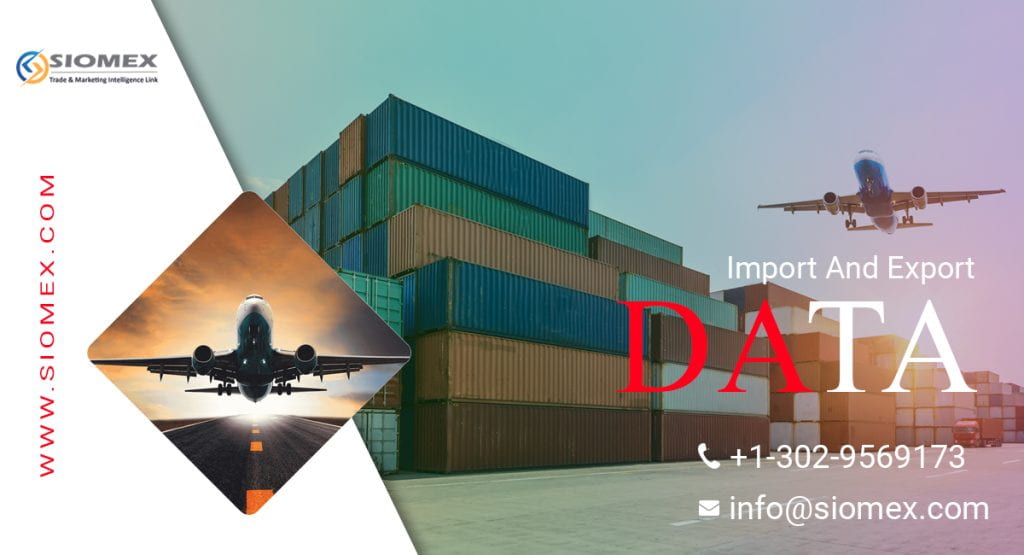In today’s globalized economy, engaging in export business can be a lucrative opportunity for entrepreneurs. The ability to sell products or services to international markets opens up a world of possibilities for increased profitability. However, not all export businesses are created equal in terms of profitability. In this article, we will explore various export business ideas and discuss factors to consider when choosing the most profitable venture.
Export Import business refer to the selling of goods or services produced within a country to customers located in other countries. It plays a vital role in boosting economic growth and creating employment opportunities. When it comes to choosing an export business, profitability becomes a crucial factor to consider. Entrepreneurs aim to maximize their returns while ensuring sustainable growth. Let’s delve into the world of export business and explore the most profitable options available.
Identifying Profitable Export Business Opportunities
Before diving into the specific export business ideas, it is essential to understand the process of identifying profitable opportunities. Thorough research and analysis play a pivotal role in this regard.
One key aspect is researching market trends and demands. Identifying products or services that are currently in high demand globally provides a strong foundation for profitability. Additionally, analyzing competition and market saturation is crucial. Entering a market that is already saturated with similar products may make it challenging to stand out and achieve substantial profits. Hence, finding niche markets or untapped opportunities is a strategic move that can significantly contribute to profitability.
Top Profitable Export Business Ideas
There are several export business ideas that have proven to be consistently profitable. Let’s explore some of these ideas:
Electronics and Technology Products
With technological advancements occurring at a rapid pace, the demand for electronics and technology products remains high. This includes smartphones, laptops, tablets, consumer electronics, and more. By offering high-quality, innovative products, exporters can tap into a lucrative market and achieve substantial profits.
Health and Wellness Products
The global health and wellness industry has witnessed remarkable growth in recent years. Exporting products such as dietary supplements, organic foods, herbal remedies, and fitness equipment can be highly profitable. As consumers increasingly prioritize their well-being, the demand for these products continues to rise.
Fashion and Apparel
Fashion and apparel are evergreen industries that offer significant profit potential. Exporting trendy clothing, accessories, and footwear to fashion-conscious markets can be highly rewarding. By staying up-to-date with the latest fashion trends, exporters can cater to the diverse needs of customers worldwide.
Food and Beverages
The export of food and beverages provides a wide range of profitable opportunities. Unique and traditional food items, beverages, spices, and gourmet products have a global appeal. Exporters can capitalize on the increasing interest in international cuisines and provide consumers with exotic and high-quality culinary experiences.
Home Decor and Furnishings
The demand for unique home decor and furnishings transcends geographical boundaries. Exporting items such as furniture, rugs, artwork, and decorative accessories can be highly profitable. Offering products that reflect cultural diversity and artistic craftsmanship can attract customers seeking exclusive and aesthetically pleasing designs.
Beauty and Cosmetics
The beauty and cosmetics industry is thriving, with a constant demand for skincare, makeup, and personal care products. Exporting beauty products that are organic, natural, or cruelty-free can be particularly appealing to discerning consumers. By leveraging effective marketing and branding strategies, exporters can establish a strong presence in this competitive industry.
Automotive Parts and Accessories
As the automotive industry continues to expand, the demand for quality parts and accessories grows as well. Exporting auto parts, tires, batteries, and accessories to international markets can yield substantial profits. Collaborating with established manufacturers and ensuring compliance with safety standards is crucial in this field.
Renewable Energy Products
With the increasing focus on sustainability and renewable energy sources, exporting products such as solar panels, wind turbines, and energy-efficient solutions can be highly profitable. As countries transition towards greener technologies, the demand for these products continues to rise.
Factors to Consider for Profitable Export Business
While identifying profitable export business ideas is essential, it is equally crucial to consider several factors to ensure long-term profitability. Some of these factors include:
Quality and Uniqueness of Products
Offering high-quality products that stand out from competitors is vital. Emphasizing uniqueness, innovation, and superior craftsmanship can help exporters attract customers and command premium prices.
Pricing and Profit Margins
Setting appropriate pricing strategies and maintaining healthy profit margins are essential for sustainable growth. Careful consideration of production costs, transportation expenses, and market demand is necessary to strike the right balance.
Logistics and Shipping Considerations
Efficient logistics and shipping processes are critical in export business. Timely and cost-effective delivery of products is crucial for customer satisfaction and repeat business. Understanding customs regulations, packaging requirements, and freight options is necessary to optimize operations.
Cultural and Legal Aspects of Target Markets
Exporters must be aware of cultural sensitivities and legal frameworks in their target markets. Adapting products and marketing strategies to suit local preferences and complying with import/export regulations ensures smooth business operations.
Building Strong Business Networks and Relationships
Establishing strong partnerships and networks with suppliers, distributors, and customers is vital. Collaborating with reliable and trustworthy business partners enhances market reach and opens doors to new opportunities.
Strategies for Maximizing Profitability in Export Business
To maximize profitability in export business, entrepreneurs can adopt various strategies:
Implementing Effective Marketing and Branding Strategies
Creating a strong brand image and implementing targeted marketing campaigns can help exporters reach their desired customer base. By highlighting unique selling points and creating compelling narratives, businesses can differentiate themselves in competitive markets.
Optimizing Online Presence and Utilizing Digital Marketing
Leveraging digital platforms and e-commerce channels can significantly expand market reach. Developing user-friendly websites, utilizing social media platforms, and implementing search engine optimization (SEO) techniques can drive traffic and increase online sales.
Offering Personalized and Customized Products
Providing customization options and personalized experiences can add value to products and attract customers willing to pay a premium. Tailoring products to individual preferences demonstrates a commitment to customer satisfaction and fosters brand loyalty.
Expanding into Emerging Markets
Exploring emerging markets with growing consumer bases can be a strategic move for exporters. These markets often offer untapped potential and fewer competitors, allowing businesses to establish themselves as pioneers and gain a significant market share.
Continuous Improvement and Innovation
Stagnation can hinder profitability in import export business. Embracing continuous improvement and innovation ensures that products remain relevant and competitive. Keeping abreast of industry trends, customer feedback, and technological advancements allows businesses to stay ahead of the curve.
Challenges and Risks in Profitable Export Business
While export business can be highly profitable, it is essential to acknowledge and mitigate potential challenges and risks:
Fluctuating Exchange Rates
Currency exchange rate fluctuations can impact profitability. Exporters must closely monitor exchange rates, hedge currency risks when necessary, and adjust pricing strategies accordingly.
Trade Barriers and Regulations
Navigating complex trade barriers, import/export regulations, and compliance requirements can be challenging. Exporters must stay updated with the evolving regulatory landscape and seek professional assistance when needed.
Political and Economic Instability in Target Markets
Political and economic instability in target markets can disrupt business operations and affect profitability. Careful risk assessment and diversification into multiple markets can help mitigate these risks.
Managing Supply Chain and Logistics
Efficient supply chain management is crucial for timely delivery and cost optimization. Exporters must ensure smooth coordination between suppliers, transportation providers, and distributors to avoid delays and quality issues.
Intellectual Property Protection
Protecting intellectual property rights is vital in export business. Exporters should understand the legal frameworks and take appropriate measures to safeguard their products, designs, and brand identities.
Conclusion
Choosing the most profitable export business requires a careful assessment of market trends, product uniqueness, and various other factors. By identifying niche markets, offering high-quality products, and implementing effective marketing strategies, entrepreneurs can maximize their profitability. However, it is important to remain agile, adapt to changing market dynamics, and address challenges proactively to ensure sustained success in the export business.
FAQs
1. How do I choose the right export business?
Choosing the right export business involves researching market trends, analyzing competition, and identifying niche opportunities. Consider factors such as demand, profitability, uniqueness of products, and your own interests and expertise.
2. Which countries offer the best opportunities for export business?
The best countries for export business depend on various factors such as market demand, economic stability, trade regulations, and cultural compatibility. Conduct thorough market research to identify countries with growth potential in your chosen industry.
3. How can I overcome language and cultural barriers in international trade?
Overcoming language and cultural barriers requires effective communication and cultural understanding. Hiring translators or local representatives, learning basic language phrases, and adapting marketing materials to suit cultural norms can help bridge these gaps.
4. Is it necessary to have previous experience in export business?
Previous experience in export business is beneficial but not always necessary. Conducting thorough research, seeking expert advice, and continuously learning about international trade practices can help you succeed even as a newcomer.
5. What are the potential risks involved in export business?
Potential risks in export business include currency fluctuations, trade barriers, political instability, supply chain disruptions, and intellectual property infringement. Risk assessment, diversification, and proactive risk management strategies are essential to mitigate these risks.





